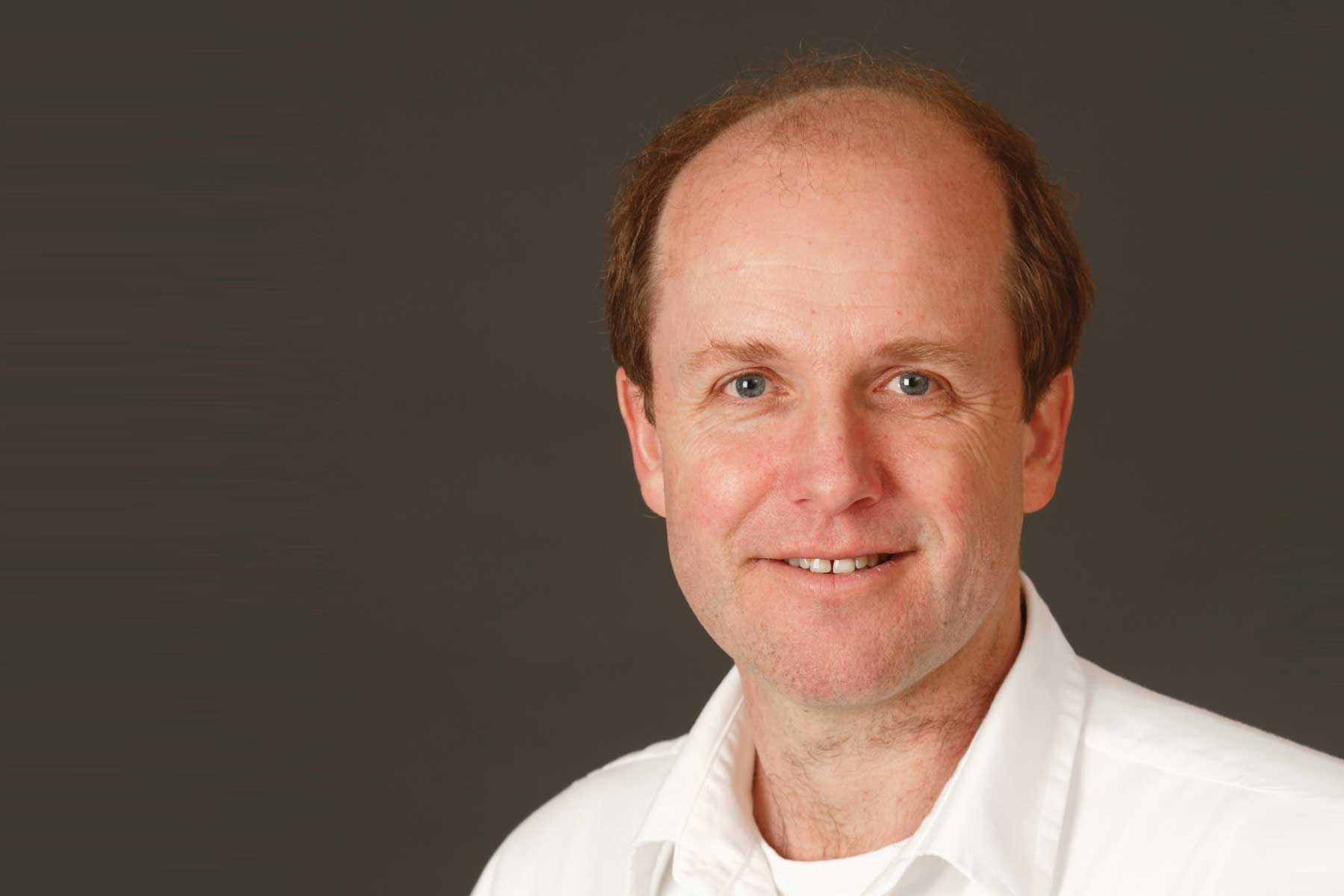Ostrow Researcher Earns Prestigious IADR Distinguished Scientist Award

Posted
22 Jun 16
Professor Michael Paine PERIO ’99 recognized for contributions to dental science at 94th General Session and Exhibition of the IADR.
Professor Michael Paine has been recognized for his biomineralization research by the International Association for Dental Research (IADR) at its 2016 annual conference in Seoul, South Korea.
The IADR, a nonprofit organization with 12,000 members worldwide, bestows Distinguished Scientist Awards annually on investigators in several dental research subdisciplines, including dental caries, saliva, prosthodontics and implants.
Paine’s award, the Distinguished Scientist Award for Basic Research in Biological Mineralization, is meant to stimulate, encourage and recognize biomineralization research. It is awarded to a scientist who has demonstrated original thought and accomplishment in the field of mineralization of biological tissues.
“This is one of the highest honors in dental research,” explained Ostrow’s Associate Dean of Research Yang Chai PhD ’91, DDS ’96, who himself earned a Distinguished Scientist Award for Craniofacial Biology Research in 2011. “We are extremely proud of Michael for being this year’s winner.
Paine’s colleague and former mentor, Malcolm Snead, added, “This award means the community of scientists identify Dr. Paine as one of the best in the field and one who has changed the scientific paradigm.” Snead received a Distinguished Scientist Award for Oral Biology in 2001.
In addition to Chai and Snead, there have been a handful of other Distinguished Scientist Award winners at Ostrow, including Dean Emeritus Harold Slavkin ’61, DDS ’65; Pascal Magne and Jorgen Slots.
“It says a lot for USC,” Paine said. “The number of awards that come here certainly indicate that we’re one of the top research dental schools in the country.”
From Down Under
Paine moved to the United States to pursue his postdoctoral studies after earning a dental degree and a doctor of philosophy degree in pathology at the University of Sydney in Australia.
He joined Ostrow as a research associate in 1994, working at the Center for Craniofacial Molecular Biology (CCMB) with Snead, who was studying biomineralization processes as they relate to enamel formation.
In 1999, Paine finished his periodontology certificate program and became an Ostrow faculty member.
His postdoctoral research project, “Protein to Protein Interactions: Criteria Defining the Assembly of the Enamel Organic Matrix,” won the 1999 William J. Gies Award for best paper after it had been published in the Journal of Dental Research.
Understanding Enamel Formation
In the past two decades, Paine has published nearly 80 papers on enamel formation, striving to add insight into the biological process responsible for producing the human body’s hardest material.
Enamel does not have a blood supply. Consequently, it cannot regenerate or repair itself on its own. Understanding the processes that lead to its development could effect revolutionary changes in how dentists treat erosion, caries or even trauma that impacts enamel, Paine explained.
Having a solid understanding of the biological activities involved in generating enamel could ultimately lead to the development of better and more appropriate materials to repair damaged tissue.
Paine’s current research interests remain firmly grounded in understanding the fundamental biology of enamel formation.
A Nurturing Environment
Since 2000, Paine has enjoyed continuous funding from the National Institute of Dental Craniofacial Research to continue his research pursuits at CCMB.
“The idea that you’re contributing to the literature and adding novel insight into the biological process of enamel formation is satisfying,” Paine said. “It’s important work to the people who are trying to progress further to make better dental materials for various applications.”
Paine is also involved in the mentorship of the next generation of dental researchers as director of the craniofacial biology graduate program at Ostrow.
His program was recently awarded a five-year renewal on its NIH/NIDCR T90/R90 grant, which provides stipends for student and postdoctoral researchers to cover living expenses, salaries, tuition, medical insurance and laboratory reagents.
Paine said he was inspired by the next generation of researchers who showed such passion for the work they do every day in the laboratory.
Beyond that, though, he said he’s inspired by the emphasis on research at Ostrow and USC.
“Ostrow provides a very nurturing environment,” Paine said. “The dental school and USC in general are very supportive of the faculty and students who devote a significant amount of time doing research.”